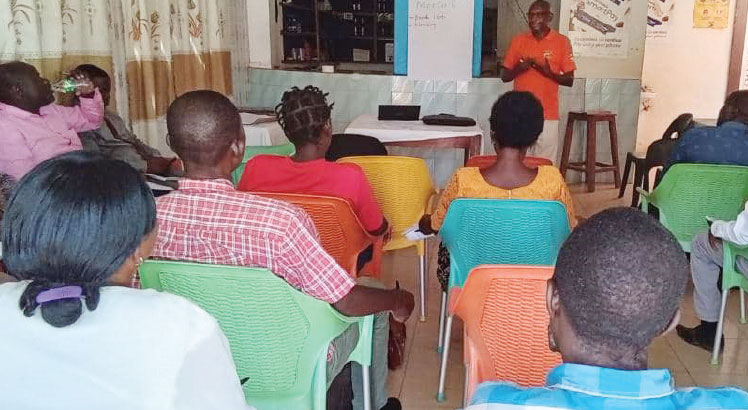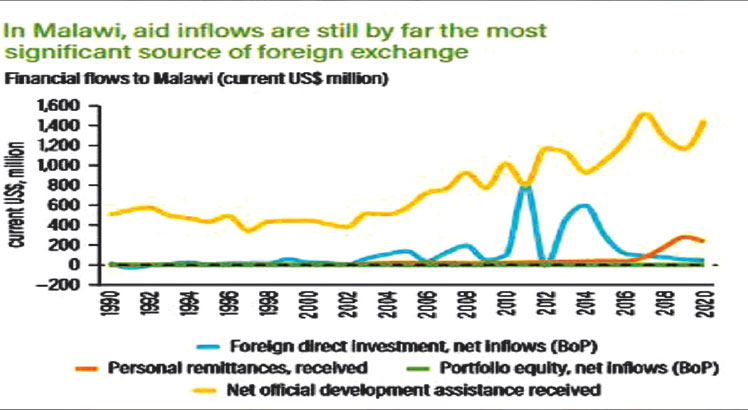The fear of maternal mortality has currently no hold on the community in group village head (GVH) Chikombe in Traditional Authority (T/A) Mphonde in Nkhotakota.
As a health and nutrition promoter for Thandizo and Chimwemwe care groups in the area, Hanifa Siyame has seen it all. She now hopes that such avoidable tragedies have been consigned to the dustbins of history.
She attributes the change in their fortunes to the Community Behaviour Tracking Tool, a monitoring and evaluation tool under Afikepo nutrition programme, which is funded by the European Union and being implemented by FAO and Unicef in 10 districts.
“We are coming from a bad situation. Pregnant women rarely attended antenatal clinics and even when they did, they didn’t take the iron-folic they were prescribed,” she says.
The community, however, seems to have turned a corner, all thanks to the tool which has allowed the community to track health and nutrition issues in the area and take corrective measures where necessary.
Siyame: All women now attend antenatal clinics
“We now meet as a community every three months to assess the progress we have made in health and nutrition, and this has helped to reduce incidence of maternal deaths. All women now attend antenatal clinics and take their medicines.
“Community bylaws and working with male partners have also helped to ensure women take their medicine faithfully,” Siyame explains.
Afikepo supports multi-sectorial efforts to curb malnutrition among children below five years of age, women of childbearing age, pregnant and breastfeeding women and adolescent girls in Chitipa, Karonga, Mzimba, Nkhata Bay, Nkhotakota, Salima, Kasungu, Chiradzulu, Thyolo and Mulanje districts.
The tracking tool contains nutritional indicators to track the progress communities are making in terms of behavioral change.
Main indicators tracked by the tool include the numbers of pregnant women, breastfeeding mothers, adolescent girls and nutritional assessments of under-five children using the Middle Upper Circumference Tape (Muac).
“The tool acts as our guide in terms of what is working and what is not. It informs our decision-making about what should be done to ensure we make it right. If the indicators are bad, we come together as chiefs, cluster leaders and everyone, and discuss the matter.
“For instance, we had a problem with consumption of legumes and especially the cultivation of beans due to the weather in this area. The tool guided us on this and we consulted agriculture extension workers who gave us advice to diversify to other legumes such as pigeon peas, cowpeas and groundnuts,” says Siyame.
GVH Chikombe says the application of the tool has built resilience and promoted self-reliance and good nutrition practices in his area.
“We grow vegetables, legumes, cassava, maize, which make us food secure. We support the work of promoters and cluster leaders and whenever we have meetings, they update us about the nutritional needs of children. Now, our children are not stunted; they are bright and healthy,” he says.
Packson Tsiku, Afikepo district nutrition officer for Nkhotakota, also says the tool has helped in monitoring behavioral improvements in the communities. Data for the tracking tool is collected monthly, but it is compiled over a period of three months, after which care group promoters consolidate the report and share it with stakeholders in the community.
“It is at these community meetings where they discuss the data, what can be the cause of a trend and what measures the community can put together to improve,” he says.
Tsika further explains that the tracking tool exposes bottlenecks in communities and the solution they come up with are those that can work best in their community and culture.
“When we compare when this tool was introduced in 2020 to now, we see a great improvement in all indicators across the district and these changes are attributed to these community meetings that take place every quarter. They can assess if they are making progress by comparing data of one quarter from previous quarters to see how they are improving and to see which areas still need more efforts to improve on,” he says.
With the use of the tool, T/A Mphonde communities have improved their legumes uptake to 70 per cent compared to less than 30 per cent before the tool was deployed two years ago.
“The uptake of iron-folic by pregnant women has also been a huge success because when we were starting, it was below 60 per cent, but it is now close to 100 per cent almost in all areas,” says Tsiku.
The post Tracking tool brings new lease of life first appeared on The Nation Online.
The post Tracking tool brings new lease of life appeared first on The Nation Online.
 Moni Malawi
Moni Malawi 

